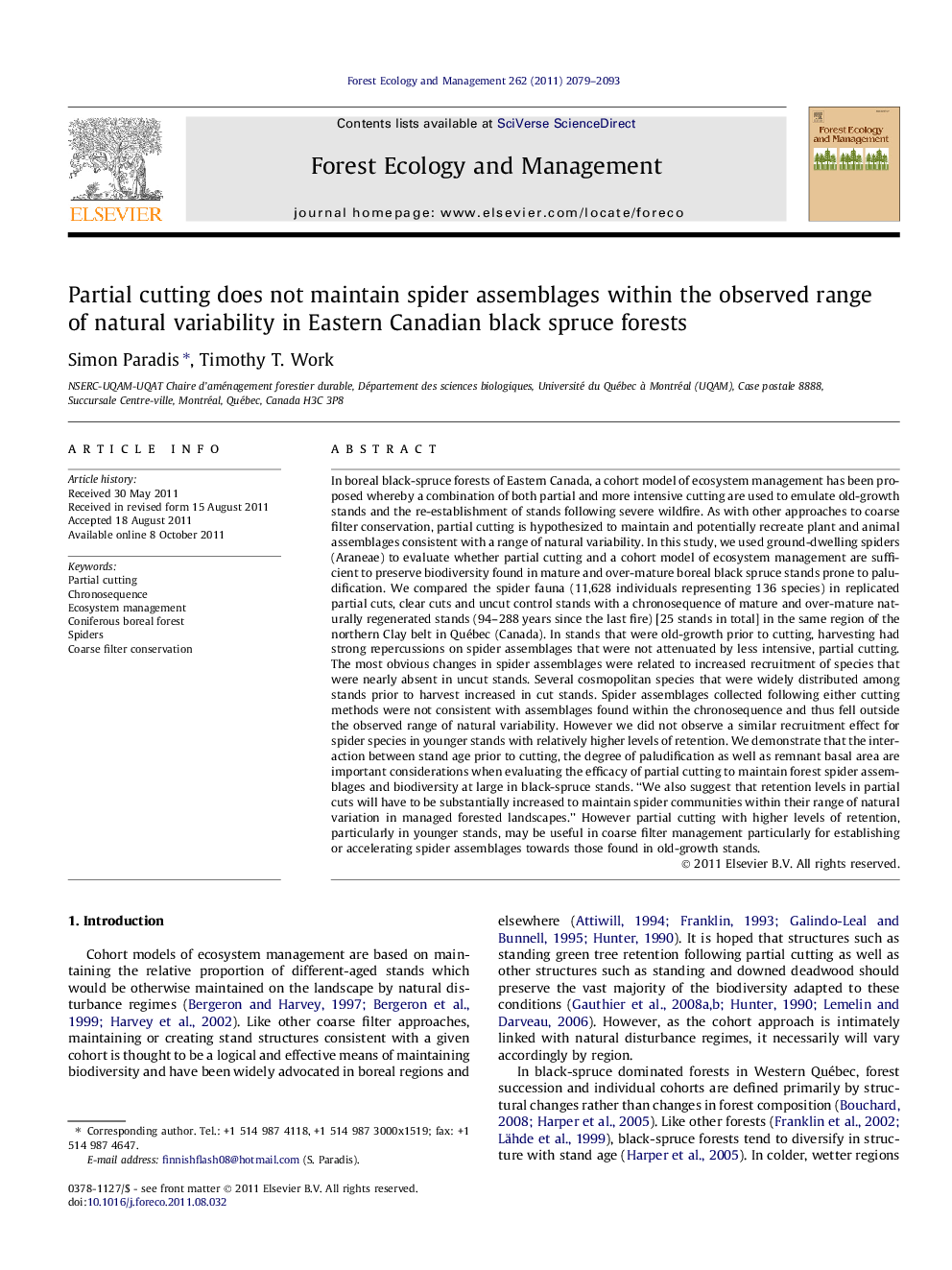| کد مقاله | کد نشریه | سال انتشار | مقاله انگلیسی | نسخه تمام متن |
|---|---|---|---|---|
| 87922 | 159271 | 2011 | 15 صفحه PDF | دانلود رایگان |

In boreal black-spruce forests of Eastern Canada, a cohort model of ecosystem management has been proposed whereby a combination of both partial and more intensive cutting are used to emulate old-growth stands and the re-establishment of stands following severe wildfire. As with other approaches to coarse filter conservation, partial cutting is hypothesized to maintain and potentially recreate plant and animal assemblages consistent with a range of natural variability. In this study, we used ground-dwelling spiders (Araneae) to evaluate whether partial cutting and a cohort model of ecosystem management are sufficient to preserve biodiversity found in mature and over-mature boreal black spruce stands prone to paludification. We compared the spider fauna (11,628 individuals representing 136 species) in replicated partial cuts, clear cuts and uncut control stands with a chronosequence of mature and over-mature naturally regenerated stands (94–288 years since the last fire) [25 stands in total] in the same region of the northern Clay belt in Québec (Canada). In stands that were old-growth prior to cutting, harvesting had strong repercussions on spider assemblages that were not attenuated by less intensive, partial cutting. The most obvious changes in spider assemblages were related to increased recruitment of species that were nearly absent in uncut stands. Several cosmopolitan species that were widely distributed among stands prior to harvest increased in cut stands. Spider assemblages collected following either cutting methods were not consistent with assemblages found within the chronosequence and thus fell outside the observed range of natural variability. However we did not observe a similar recruitment effect for spider species in younger stands with relatively higher levels of retention. We demonstrate that the interaction between stand age prior to cutting, the degree of paludification as well as remnant basal area are important considerations when evaluating the efficacy of partial cutting to maintain forest spider assemblages and biodiversity at large in black-spruce stands. “We also suggest that retention levels in partial cuts will have to be substantially increased to maintain spider communities within their range of natural variation in managed forested landscapes.” However partial cutting with higher levels of retention, particularly in younger stands, may be useful in coarse filter management particularly for establishing or accelerating spider assemblages towards those found in old-growth stands.
► Partial cutting could recreate/maintain old forest structures and biodiversity.
► We compare spider assemblages of partial cuts to a series of uncut stands (94–288 years).
► Spider assemblages after partial cutting have no analogue in our chronosequence.
► Remnant basal area consistent with old stands could preserve associated biodiversity.
► Partial cutting in mature productive stands could help reaching conservation goals.
Journal: Forest Ecology and Management - Volume 262, Issue 11, 1 December 2011, Pages 2079–2093